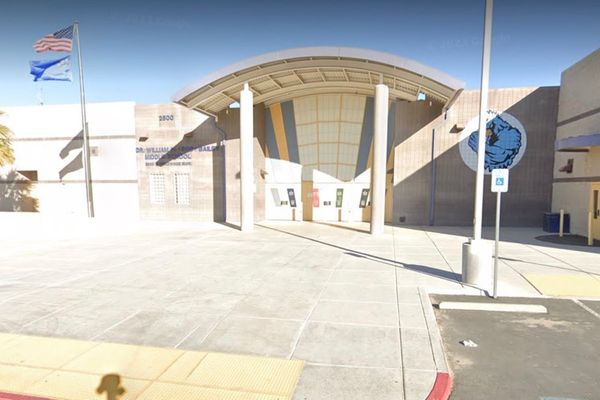San Sebastian serves up a feast of traditional and modern food for the delight of Anna King Shahab.
Autumn's harvest — eggplants, pumpkins, striped gourds, curvy scallopini, and overflowing carts of flowers — greet us, along with our local guide, chef Bendur Elizondo, as our Intrepid tour group arrives at Plaza Sarriegui, at the entrance to La Bretxa market in San Sebastian (known in Basque as Donostia). Bendur points out the statue of the man the square is named for, the composer Sarriegui (d.1913). His legacy is also immortalised here in bronze — a drummer, a nod to the annual tamborrada festival, which sees Sarriegui's iconic marching music played up and down town every January 20.
To fuel all the drumming, the men of the town traditionally have a large meal with friends in a txoko.
These are gastronomic societies, whose members gather to cook, and eat. Txokos are strictly male-only, but Bendur has clearly managed to bend the rules, because the plan for our mixed-sex group today is to take our spoils from the market to his txoko and learn to prepare some typical Basque dishes.
La Bretxa is below street level, a cavernous tiled market divided into sections for fruit and veg, all the pickles, olives and oils you could dream of, fresh seafood, salt cod, fresh butchery, and charcuterie (of course, we wouldn't be in Spain without jamon). Bendur takes us to his favourite stalls to pick up supplies for our cooking session. We hop from counter to counter, tasting the local specialties at the cheesemonger, and the best-seller at the delicatessen Zapore Jai, the famous jamon Iberico. Bendur explains the method for carving those paper-thin slices is a deft elbow and wrist action akin to "playing the violin".
Inferior examples of jamon might come cheap, but the best jamon iberico, like this, where the free-ranging pigs have eaten their fill of acorns, will set you back around $500 for a leg. You can buy special ham-shaped bags to cosset your investment in, too.
We also taste and fall in love with txistorra, the local sausage — like chorizo but thinner and longer, uncured and quite mildly spiced — and I vow to make sure next time I'm here on Santo Tomas day, December 21st, when txistorra is handed out free at La Bretxa, and served up all over town.
Our last stop is at Bendur's preferred fishmonger, Sarriegui (hey, he's a popular guy), to buy fresh cod fillet, as well as hake throats — a local delicacy. This is definitely the busiest fishmonger in the market, a crowd of locals waiting at the counter (this is the fishmonger that supplies feted Basque chefs Juan Mari and Elena Arzak). The cold, deep waters of the Bay of Biscay are a treasure trove of fish species, and Basque country is known for the quality of its seafood.
We farewell the market and walk to Bedur's txoko, Los Corcones. Also below ground level, its low ceiling, stone walls and heavy polished wooden furniture certainly lend an air of secret society, but really, there's no signing in, no weird hand-signals, just a welcoming remark by Bendur to help ourselves to the fridge. It's time to crack open a bottle of refreshing lager.
Bendur hands round a platter of txistorra and gets to work at the cooker which sits in the middle of the kitchen. We happily crowd round to watch. He explains that txokos have both saved traditional Basque cooking traditions from dying out, and encouraged new ideas.
This reflects the food scene in San Sebastian on the whole: it's fiercely proud of its historical cuisine, which revolves around for the most part simple dishes — yet is also a hot spot of culinary innovation and home to more Michelin-starred restaurants than almost any city in the world (just pipped by Kyoto).
All cooks here have something in common: a basic respect for and understanding of the best local ingredients.
We watch Bendur make the garlic, olive oil and salt cod emulsification that is the famous Basque pil-pil sauce — he uses a small sieve to gently whisk the sauce in the pan while adding the oil slowly through the sieve (a technique I note for later to try with gravy and bechamel). He also makes a salsa verde to serve with the fresh cod, hake throats and clams — we help out in very minor ways while enjoying more of the local beer.
Before we sit down to enjoy these typical Basque fish dishes, Bendur gives us a guided tasting of local cheeses from the market. To accompany these he pops the cork on a chilled bottle of the beloved local white wine txakoli and inserts a kind of semi-stopper into the neck — this allows the wine to be poured into the glass more easily from a height, as is tradition, which aerates the wine and accentuates its natural effervescence. With high acidity and low alcohol, one sip had me wishing I could get this on wine lists back home.
Most local cheeses are made with sheep's milk (raw or pasteurised) and there's a strong influence from the styles of French cheesemaking from just over the border. There's Irati, which hails from the Navarra forest of the same name, a place revered, and feared, in Basque mythology. Idiazabal, the most common table cheese here in San Sebastian, is smoky and sweet. And finally Roncal, Spain's first cheese to gain DOP status: it's the most sheepy of this lot, robust and piquant but with gentler buttery and fruity notes.
It wouldn't be San Sebastian without pintxos, so Bendur shows us how to make our own Gilda pintxos.
Named after the famous Rita Hayworth character (assumedly because they're pretty sexy) the Gilda is simple enough: take a juicy olive, a salty anchovy and a pickled pepper and thread on a toothpick.
We also make our own dessert, shaping pastry round a creme patisserie filling and decorating with our initials so we can identify who's top chef when they're delivered to the table after our mains. (No agreement on that).
As late afternoon rolls round we farewell Bendur and the Los Corcones cave of gastronomical delights spits us out on to the handsome streets of San Sebastian. The sun is still up and the perfect curves of La Concha bay beckon: a run up Mt Igeldo ensures an appetite for the pinxtos bars we'll be hitting when night falls.
Checklist
GETTING THERE
flies to Barcelona, via Hong Kong.
's Northern Spain Real Food Adventure, from $3465pp.







